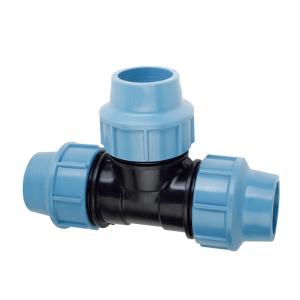Plastic pipe fittings have become an integral part of modern plumbing systems. They are versatile, easy to install, and cost-effective, making them a popular choice for both residential and commercial applications. In this article, we will explore the role of plastic pipe fittings in various plumbing scenarios, their advantages, and some common types of plastic pipe fittings available in the market.
The Versatility of Plastic Pipe Fittings
Plastic pipe fittings are known for their versatility. They can be used in a wide range of plumbing applications, from water supply systems to drainage and sewer systems. One of the reasons for their popularity is their ability to adapt to different types of pipes and fittings. Whether you are working with PVC, PEX, or CPVC pipes, there is a plastic pipe fitting that can be used to connect them.
Ease of Installation
Installing plastic pipe fittings is a breeze compared to their metal counterparts. They require no special tools or skills, making DIY plumbing projects more accessible to homeowners. The process usually involves simply pushing the pipe into the fitting or using a solvent to create a bond. This ease of installation not only saves time but also reduces the likelihood of errors that can lead to leaks or other plumbing issues.
Cost-Effectiveness
When it comes to plumbing, cost is always a consideration. Plastic pipe fittings are generally more affordable than metal ones, making them an attractive option for those looking to save on their plumbing expenses. Not only are they cheaper to purchase, but they also require less labor to install, further reducing the overall cost of a plumbing project.
Advantages Over Metal Fittings
Plastic pipe fittings offer several advantages over metal fittings. They are lighter, making them easier to handle and transport. They are also resistant to corrosion, which means they can be used in environments where metal fittings might rust or degrade over time. Additionally, plastic fittings are less likely to conduct heat or electricity, providing an added layer of safety in certain applications.
Common Types of Plastic Pipe Fittings
There are several types of plastic pipe fittings available, each designed for specific plumbing needs:
– Elbows and Couplings: These fittings are used to change the direction of a pipe or to connect two pipes end-to-end. They come in various angles and lengths to suit different plumbing layouts.
– Tees and Crosses: These fittings allow for the branching of pipes, creating additional pathways for water flow. They are essential for complex plumbing systems where multiple connections are required.
– Reducer and Bushings: When you need to connect pipes of different sizes, reducer and bushing fittings are the solution. They help to transition between different diameters smoothly.
– Caps and Plugs: These are used to seal the ends of pipes when they are not in use or to prevent debris from entering the system.
– Unions and Adapters: These fittings are used to connect different types of pipes or fittings together, providing flexibility in system design and allowing for easy repairs or modifications.
Personal Touch: Choosing the Right Fittings for Your Project
When choosing plastic pipe fittings for your plumbing project, consider the specific needs of your system. Think about the type of pipes you are using, the layout of your plumbing, and the environment in which the fittings will be installed. Personalizing your choice based on these factors will ensure that you select the most suitable fittings for your project.
Emotional Connection: The Impact of Quality Fittings
High-quality plastic pipe fittings not only make your plumbing system more efficient but also give you peace of mind. Knowing that your plumbing system is equipped with reliable components can reduce stress and provide a sense of security in your home or business.
The Future of Plastic Pipe Fittings
As technology advances, we can expect to see even more innovations in the field of plastic pipe fittings. New materials and designs will continue to improve their performance, durability, and adaptability, ensuring that they remain a top choice for plumbers and homeowners alike.
In conclusion, plastic pipe fittings play a crucial role in modern plumbing systems. Their versatility, ease of installation, cost-effectiveness, and advantages over metal fittings make them an excellent choice for a wide range of applications. By understanding the different types of fittings available and considering the specific needs of your project, you can ensure that you select the right fittings for the job. And as the future unfolds, we can look forward to even more advancements in this field, making our plumbing systems more efficient and reliable than ever before.

